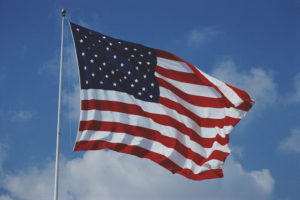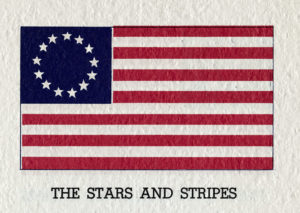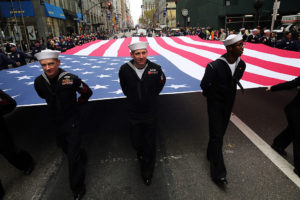-
Halloween
- The Story Behind Halloween – Lesson
- The Story Behind Halloween – Quiz
- Are You Too Old To Go Trick-Or-Treating? – Lesson
- Look out for the Blue Pumpkin – Lesson
- Is the White House Haunted? – Lesson
- Is the White House Haunted? – Quiz
- Mummies Discovered in Egypt – But That’s Nothing to Fear – Lesson
- Salem Witch Trials: When Being Called a Witch Meant Death – Lesson
- Halloween Around the World: It Isn’t Just Costumes and Candy – Lesson
- Halloween Around the World: It Isn’t Just Costumes and Candy – Quiz
-
Thanksgiving
- The Evolution of Thanksgiving – Lesson
- The Evolution of Thanksgiving – Quiz
- The Political Roots of Thanksgiving – Lesson
- The Political Roots of Thanksgiving – Quiz
- Turkey for Thanksgiving – But Why? – Lesson
- Turkey for Thanksgiving – But Why? – Quiz
- This Thanksgiving, Consider Helping the Less Fortunate – Lesson
-
Christmas
-
Easter
- Good Friday: Christ Carried Sin to the Grave – And Left It There – Lesson
- Good Friday: Christ Carried Sin to the Grave – And Left It There – Quiz
- Easter Traditions: From Rabbits to Egg Jarping – Lesson
- Easter Traditions: From Rabbits to Egg Jarping – Quiz
- Easter Monday and Egg Rolling at the White House – Lesson
- Easter Monday and Egg Rolling at the White House – Quiz
-
Federal Holidays and Observances
- New Year’s Day: Just as Political as Anything Else – Lesson
- This Presidents’ Day, Let’s Remember the Weird – Lesson
- Astounding Facts about US Presidents – Lesson
- Astounding Facts about US Presidents – Quiz
- Memorial Day: A Time of Honor and Respect – Lesson
- Memorial Day: A Time of Honor and Respect – Quiz
- From Decoration Day to Memorial Day – Lesson
- From Decoration Day to Memorial Day – Quiz
- Who Was the Poppy Lady, Moina Belle Michael? – Lesson
- Who Was the Poppy Lady, Moina Belle Michael? – Quiz
- The Origins of Flag Day – Lesson
- The Origins of Flag Day – Quiz
- America’s Flag – An Evolved Banner for an Ever-Changing Country – Lesson
- America’s Flag – An Evolved Banner for an Ever-Changing Country – Quiz
- Celebrating the 4th of July – Lesson
- Celebrating the 4th of July – Quiz
- Who Should We Thank for Labor Day? – Lesson
- Who Should We Thank for Labor Day? – Quiz
- Constitution and Citizenship Day – Lesson
- Constitution Day – The First Day of Constitution Week – Lesson
- Constitution Day – The First Day of Constitution Week – Quiz
- The Political Origins of Columbus Day – Lesson
- The Political Origins of Columbus Day – Quiz
- Columbus Day or Indigenous Peoples’ Day? – Lesson
- Columbus Day or Indigenous Peoples’ Day? – Quiz
- Veterans Day: A Day to Honor Those Who Served – Lesson
- Veterans Day: A Day to Honor Those Who Served – Quiz
-
Other Traditions
- Valentine’s Day Love Poems – Lesson
- Love Poems for Valentine’s Day – Lesson
- Who Was St. Valentine? – Lesson
- Who Was St. Valentine? – Quiz
- No Love for Valentine’s Day in the East – Lesson
- No Love for Valentine’s Day in the East – Quiz
- Beware the Ides of March – But Why? – Lesson
- Beware the Ides of March – But Why? – Quiz
- St. Patrick’s Day: A Celebration of the Irish – Lesson
- St. Patrick’s Day: A Celebration of the Irish – Quiz
- May Day: Dancing ‘Round the Maypole – Lesson
- May Day: Dancing ‘Round the Maypole – Quiz
- Cinco de Mayo: Celebrating Mexico’s Victory in Puebla – Lesson
- Cinco de Mayo: Celebrating Mexico’s Victory in Puebla – Quiz
- Mother’s Day: The Anti-War Effort Turned Holiday – Lesson
- Mother’s Day: The Anti-War Effort Turned Holiday – Quiz
- Father’s Day: More Than Just a Day for Ties – Lesson
- Father’s Day: More Than Just a Day for Ties – Quiz
- Presidential Fathers: Responsible for Their Kids and the Country – Lesson
- Presidential Fathers: Responsible for Their Kids and the Country – Quiz
- Proof of the Hanukkah Story Found? – Lesson
- Proof of the Hanukkah Story Found? – Quiz
The Origins of Flag Day – Lesson

(Photo by Alfred Gescheidt/Getty Images)
The Founding Fathers decided the colonists needed one symbol to unify troops.
This June 14 will be the 106th celebration of the United States flag. For more than a century, Americans have been honoring the nation’s symbol of freedom. But it wasn’t always the flag we know today. During the American Revolution, which started in 1775, the colonists carried many different banners.
In June 1775, in Philadelphia, the Second Continental Congress was meeting to create the Continental Army. During that time, they decided they needed one flag to represent all the colonists – a unified symbol. The Continental Colors, as the first American flag was named, had 13 red and white alternating stripes, plus the Union Jack sitting prominently in the corner. George Washington, however, realized this symbol greatly resembled the British flag, which made it very confusing on the battlefield.

The original Stars & Stripes, with 13 stripes and 13 stars. (Getty Images)
Two years later, on June 14, 1777, the Second Continental Congress was writing the Articles of Confederation but paused long enough to pass a resolution on a new design. It declared “The flag of the United States to be 13 stripes, alternate red and white” and that “the union be 13 stars, white in a blue field, representing a new constellation.”
How Flag Day Came to be Celebrated
On May 30, 1916, President Woodrow Wilson established Flag Day, saying he hoped Americans would show “significant expression to our thoughtful love of America” on June 14. But there had been flag celebrations long before the commander-in-chief made it official. Bernard Cigrand, for example, in 1885, was a small-town teacher in Wisconsin. He was convinced America should be celebrating its flag and held the first observance for the holiday at his school.
Today, we celebrate and honor the nation’s flag by flying it at our homes and businesses, having barbecues, and throwing parades. Americans decorate their homes and yards with red, white, and blue bows, streamers, and even create fancy cookies with themed frosting.
Fun Facts
Speaking of the colors of the flag, do you know why those particular shades were chosen? The members of the Continental Congress had very specific reasons for their choices.
- Red stands for hardiness.
- White stands for purity and innocence.
- Blue stands for vigilance and justice.
What do the stars and stripes mean?

(Photo by Spencer Platt/Getty Images)
The 13 stripes represent the original 13 colonies that fought against the British to gain American freedom. Those 13 colonies were:
- Connecticut
- Delaware
- Georgia
- Maryland
- Massachusetts
- New Hampshire
- New Jersey
- New York
- North Carolina
- South Carolina
- Pennsylvania
- Rhode Island
- Virginia

(Photo by Brooks Kraft/ Getty Images)
The 13 stripes on “Old Glory” still symbolize the original colonies, but instead of 13 stars, today’s flag has 50 to represent every state in the Union.
- Today’s design was first raised on July 4, 1960, in Maryland over the Fort National Historic Site.
- President Dwight D. Eisenhower made the 50-star design official in August 1959 with an executive order.
- 51% of Americans have a flag in their home, according to a YouGovAmerica survey.
- NASA says six American flags have been planted on the moon’s surface.
- Flying a flag upside down can be used as an official distress signal.
- According to the Flag Code, the stars and stripes are not to be used as clothes, bedding, or drapery.
- American flags are supposed to be illuminated by a light source, including the sun, when on display.
How will you celebrate Flag Day?